Exploring Smart Flip Phones: A New Era in Communication
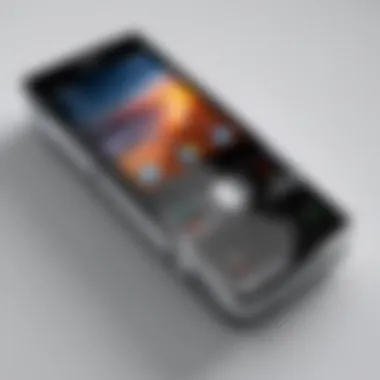
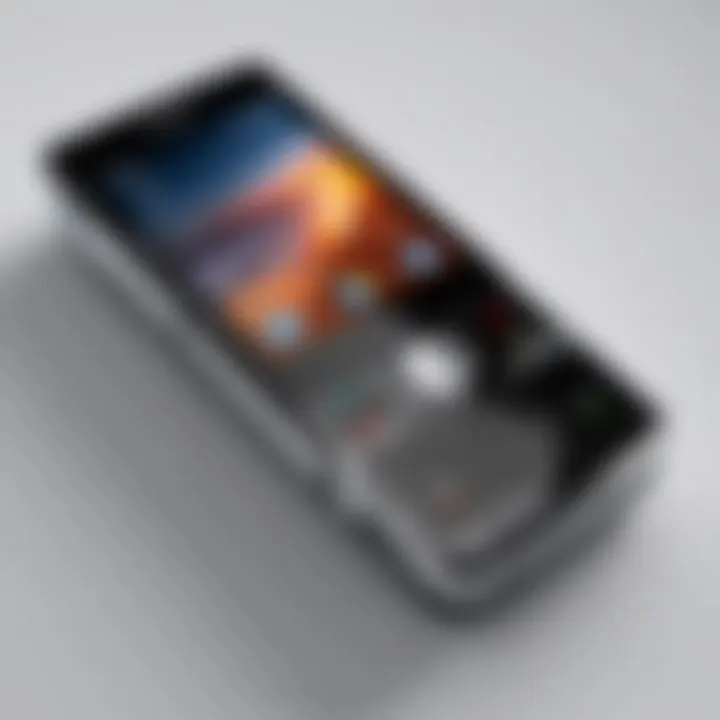
Intro
In recent years, the evolution of mobile technology has seen a return to simpler devices, particularly the smarter iteration of flip phones. These devices, often regarded as nostalgic, are now deemed relevant for modern communication. The resurgence of smart flip phones has piqued the interest of not only casual users but also information technology professionals. With their unique blend of functionality and portability, these devices challenge the conventional smartphone narrative.
This article will delve into the intricacies of smart flip phones, examining their features, performance, and usability within the context of today's mobile landscape. By comparing them to traditional smartphones, we aim to highlight their value and potential benefits for IT specialists. We will explore consumer perspectives and implications for varying work environments, ensuring a comprehensive understanding for our audience.
Prologue to Smart Flip Phones
The introduction of smart flip phones into the mobile communication landscape marks an intriguing intersection between nostalgia and modern technology. Their significance lies not merely in their design but in their potential to reshape how we interact with our devices. As we consider a world increasingly dominated by large-screen smartphones, the rise of a compact alternative raises questions about usability, consumer preferences, and market demand.
Definition and Characteristics
Smart flip phones can be defined as mobile devices that combine the classic clamshell form factor with modern smart technology capabilities. They typically feature:
- Compact Design: By folding, they occupy less space, appealing to users who prefer light and portable devices.
- Smart Functionality: Unlike traditional flip phones, these devices support applications, internet browsing, and essential smartphone features.
- Dual Displays: Many come with a primary screen that unfolds and a secondary exterior display for notifications.
- Robust Software: Most run on simplified versions of Android, allowing access to popular apps and services.
In essence, smart flip phones marry convenience with functionality, and they cater to a distinct market segment that values both simplicity and technology.
Historical Context
To fully appreciate smart flip phones, one must consider the trajectory of mobile phone design over the decades. The early 2000s saw the predominance of flip phones, known for their portability and durability. However, with the advent of the smartphone era, characterized by touchscreens and extensive apps, the flip phone design waned in popularity.
In recent years, there has been a notable revival in interest, driven by:
- Retro Appeal: Users nostalgic for simpler devices have rekindled interest in flip designs.
- Minimalism Movement: A growing number of individuals prefer devices that minimize distractions, making the simpler interface of smart flip phones attractive.
- Market Dynamics: Tech companies have recognized the gap in the market for a hybrid device that embodies both nostalgia and advanced functionality.
The evolution of smart flip phones is, therefore, not merely a return to form; it is a reflection of shifting user needs in a world increasingly aware of digital overload.
The Evolution of Mobile Phones
The evolution of mobile phones is a vital component in understanding the context and relevance of smart flip phones. It illustrates how mobile technology has progressed from simple devices to the advanced smartphones we find today. This evolution sets the stage for the smart flip phone, which occupies a unique position in the marketplace. It highlights shifts in consumer preferences and technological advancements.
From Basic Phones to Smartphones
Mobile phones began as basic communication tools. The earliest devices allowed users to make calls. These first models were large, cumbersome, and limited in functionality. Over time, phones became smaller and introduced features such as text messaging and basic cameras.
With the arrival of smartphones, the landscape changed drastically. Devices like the Apple iPhone and Samsung Galaxy pushed boundaries by introducing advanced operating systems, touchscreens, and app ecosystems. Users gained the ability to access the internet, use social media, and manage multiple applications seamlessly. This shift significantly impacted user expectations.
Smartphones became more than just communication devices; they transformed into essential management tools for both personal and professional tasks. The rise of high-speed networks, such as 4G and now 5G, further enhanced this capability, enabling real-time information access and connectivity.
The Resurgence of the Flip Phone Design
Interestingly, as smartphones dominated the market, flip phones experienced a decline. However, recent years have seen a resurgence in interest for this design. Consumers began to seek devices that offer simplicity, focus, and a break from constant notifications associated with smartphones.
Brands like Motorola with their Razr model have capitalized on this trend. The modern flip phone integrates smartphone features within a familiar form factor. This combination provides a tactile experience while also addressing the practical aspects of modern communication needs.
The revival presented by smart flip phones allows consumers to enjoy connectivity while minimizing distractions. They often include essential apps and capabilities expected in a smartphone but with fewer bells and whistles. This practical approach appeals to users who desire function rather than excess.
In summary, the narrative of mobile phones advancing from basic communication devices to sophisticated smartphones creates a framework for understanding why smart flip phones are returning. They offer a blend of functionality, practicality, and nostalgic design. As technology continues to evolve, smart flip phones position themselves as viable options in modern communication.
Key Features of Smart Flip Phones
The examination of smart flip phones reveals a multifaceted device that blends nostalgia with contemporary technology. This section outlines the key features which determine their viability in modern communication, particularly focusing on operating systems, user interface, camera capability, and connectivity.
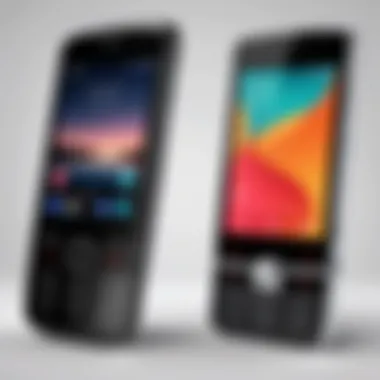
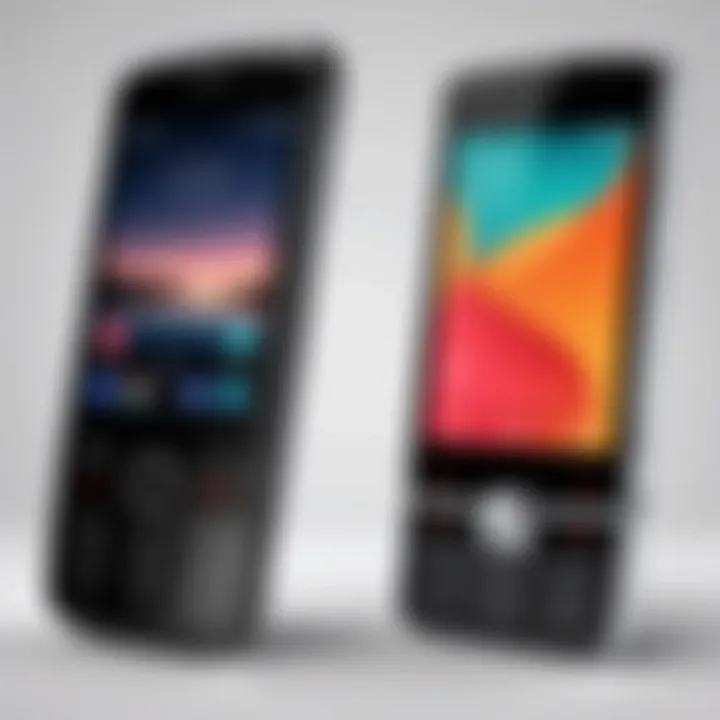
Operating Systems and Software
Smart flip phones typically operate on streamlined versions of popular operating systems like Android. Unlike traditional smartphones, these operating systems are tailored to suit the unique interface of flip phones. They facilitate essential applications while optimizing performance. Notably, Android-based systems in smart flip phones allow manufacturers to integrate apps designed specifically for lighter, less resource-intensive use. Therefore, users benefit from a user experience that combines simplicity with necessary functionality, allowing for everyday tasks without overwhelming the device's resources.
User Interface and Experience
The user interface of smart flip phones still maintains some attributes of classic designs yet incorporates modern flair. This balance enhances user experience.
Touchscreen Capabilities
A significant component of the user interface is touchscreen capabilities. Many smart flip phones incorporate touchscreens alongside physical buttons, which enhances user interaction. This dual functionality caters to varying user preferences. The responsive nature of the touchscreen introduces a quick and smooth navigation experience, appealing to tech-savvy individuals. Additionally, the ability to utilize touch gestures enriches the overall usability. However, the small screen sizes can pose a challenge for complex tasks, where larger smartphones excel.
App Accessibility
App accessibility has improved with the rise of smart flip phones. Identifying the balance between a limited app ecosystem and user requirements is crucial. Certain applications, like social media or email clients, retain relevance and cater to the needs of users who desire connectivity. The integration of popular apps such as WhatsApp and Facebook into these devices allows users to maintain communication without investing in more expensive smartphones. Yet, the limited number of apps available compared to standard smartphones can hinder functionality for more specific tasks.
Camera Functionality
The camera capabilities in smart flip phones have advanced over time but often focus on automotive simplicity. These cameras, usually set at a moderate resolution, accommodate everyday photography needs. Users can capture key moments easily without the intricate features found in flagship smartphones. The emphasis is on practicality rather than high-definition photography. Therefore, while impressive for casual use, these cameras may not satisfy users seeking professional-grade photography.
Connectivity Options
Smart flip phones offer an impressive range of connectivity options, expanding their use cases.
5G Support
5G support is one of the standout features in the latest models of smart flip phones. The integration of 5G technology permits faster download and upload speeds, enhancing how users interact with online content. This capability makes smart flip phones appealing to professionals who depend on mobile data for their work. While the presence of 5G aids in connectivity, the need for compatible infrastructure can limit its effectiveness in certain areas, making it a dual-edged sword.
Wi-Fi Capabilities
Wi-Fi capabilities complement the mobile connectivity options. Many smart flip phones support modern Wi-Fi standards, allowing users to connect to home or office networks seamlessly. This feature is especially advantageous for individuals in professional settings, as it enhances data transfer speeds and reduces reliance on mobile data. However, like 5G, the performance can vary depending on coverage quality.
Comparative Analysis with Smartphones
The comparative analysis with smartphones serves a vital role in understanding the viability of smart flip phones within the mobile communication landscape. As technology rapidly evolves, it is critical to evaluate not just the features of these modern devices, but also how they measure up against the capabilities and functionalities provided by conventional smartphones. This exploration is particularly relevant for IT professionals and tech enthusiasts who seek to understand the practical applications and benefits that smart flip phones might offer in various contexts.
Functionality and Features
Smart flip phones, while echoing the design of their predecessors, come equipped with advanced functionalities that can rival those of full-fledged smartphones. These devices typically feature:
- Touchscreen interfaces for easy navigation.
- Access to common apps like email, messaging, and social media.
- Integrated cameras that provide decent photo quality.
A clear understanding of these features allows users to make informed decisions based on their specific communication needs. For instance, an IT professional might benefit from a smart flip phone's simplicity and focus. This could lead to improved productivity by reducing distractions associated with more complex smartphones.
Battery Life and Durability
Smart flip phones generally outperform smartphones when considering battery life and durability. Their compact size and less resource-intensive applications allow them to conserve energy effectively. Many models can last several days on a single charge, especially when compared to smartphones that often need daily charging. This aspect is particularly appealing to users in demanding environments like fieldwork or remote locations, where charging options may be scarce.
Durability is another important factor. Smart flip phones are typically designed with ruggedness in mind. Their clamshell design protects the screen and components, making these devices less susceptible to damage from drops or exposure to elements. For IT professionals who work in challenging conditions, these benefits can significantly enhance usability.
Cost and Value Proposition
When analyzing smart flip phones, cost plays a crucial role in their value proposition. The price point of most smart flip phones tends to be significantly lower than that of high-end smartphones. This affordability makes them an attractive option, especially for companies looking to provide devices to employees without incurring substantial costs.
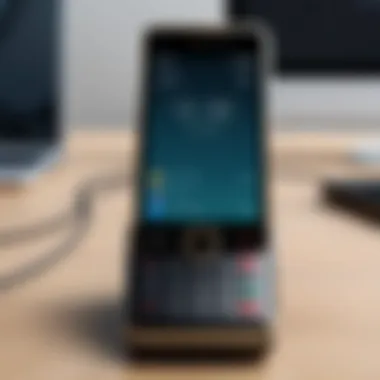
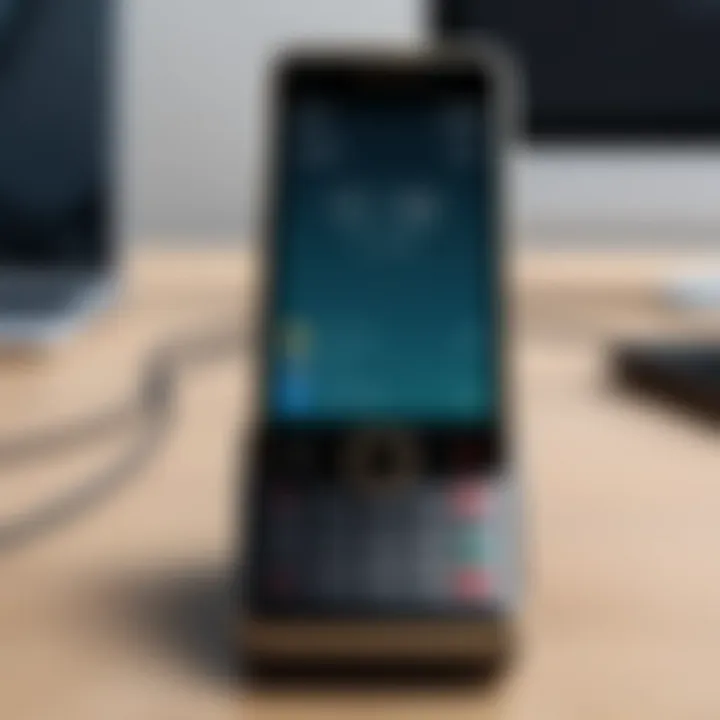
Furthermore, the associated monthly plans for these devices are often less expensive as well. This means organizations can allocate more resources to other important areas. Moreover, as some users become increasingly overwhelmed by smartphone features, a return to simplicity can provide greater satisfaction and functionality, contributing to a more valuable user experience overall.
"In certain scenarios, simplicity in design and usage can lead to better efficiency and effectiveness, especially for those who primarily need communication tools."
Consumer Perspectives and Market Trends
Understanding consumer perspectives and market trends regarding smart flip phones is crucial for grasping their relevance in the modern communication landscape. The feedback from users and identification of target demographics illuminate the potential longevity and success of smart flip phones. These devices, while aiding communication, must also align with the preferences and behaviors of today's tech-savvy audience.
Target Demographics
Smart flip phones cater to various demographics which include older users seeking simplicity and younger generations interested in a blend of retro aesthetics with contemporary technology. Research shows that older adults appreciated the large buttons and clear displays, while the younger crowd finds the design appealing and unique. Their growing popularity among specific age groups signifies a shift in consumer needs and desires.
A few segments that are particularly relevant include:
- Older Adults: Many older users prefer phones that are easy to operate. The smart flip phones offer essential features and avoid overwhelming them with excessive functions.
- Tech Enthusiasts: The appeal of retro design combined with modern features attracts professionals and tech aficionados who appreciate innovation within familiarity.
- Minimalists: Individuals preferring simplicity over complexity are more inclined towards devices that do not burden them with distractions, making smart flip phones an attractive option.
Consumer Sentiment on Functionality
The functionality of smart flip phones is a significant area of interest among consumers. These phones integrate essential smartphone features with the traditional flip phone format. Consumers often express a desire for devices that provide adequate performance without compromising ease of use.
Key sentiments expressed by potential users include:
- Portability: Many users value the compactness of smart flip phones. The ability to easily fit into pockets makes them desirable for daily use.
- Battery Life: Extended battery life is frequently mentioned as a vital feature. Users expect that devices should cater to their busy lifestyles without frequent recharging.
- Core Features: Consumers often prioritize robust calling and messaging capabilities along with useful applications like calendar and health tracking features. They want a balance of modern technology with basic functions.
"Smart flip phones represent a convergence of nostalgia and modern necessity, satisfying both the practical needs and aesthetic desires of diverse consumer segments."
Despite some skepticism regarding their longevity against traditional smartphones, ongoing feedback suggests that smart flip phones meet specific needs which smartphones may overlook. They bridge a gap, giving users a taste of modern connectivity while simplifying communication. In summary, by understanding consumer perspectives and examining market trends, stakeholders can make informed decisions about the future of smart flip phones in a rapidly evolving digital world.
Smart Flip Phones in Professional Settings
Smart flip phones represent a fascinating intersection between traditional mobile design and advanced technology. Their role in professional settings is crucial because of their practical functionality. As many professionals seek devices that balance simplicity with sophistication, smart flip phones provide a viable alternative for those who want to stay connected without the overwhelming features of full smartphones.
The compact form factor is useful. It allows for effortless portability. Professionals can easily carry these devices without sacrificing functionality. This makes them ideal for those in fields where mobility is essential, such as design and consulting. Moreover, the design typically tends to feature larger buttons and displays than basic phones, facilitating easier communication and navigation.
Use Cases for IT Professionals
For IT professionals, smart flip phones offer specific advantages. Primarily, they allow users to maintain a line of communication without being distracted by numerous app notifications typical of smartphones. This leads to enhanced focus and productivity.
- Basic Communication: Voice calls and text messaging remain strong, reliable functions. For teams working in high-stakes environments, such as IT support, having consistent communication tools is critical.
- Remote Work: As remote work continues to expand, smart flip phones serve as an effective secondary device. They can connect to Wi-Fi and handle emails, enabling quick responses without switching to heavier devices.
- Field Work: In many IT scenarios, professionals may find themselves in various environments that require hands-on work. Smart flip phones help maintain connectivity during setup, troubleshooting, and other necessary tasks.
Integration with Existing Systems
Integrating smart flip phones into existing systems presents unique challenges and opportunities. One of the main benefits is the low barrier to entry for making calls or sending quick messages. Additionally, their capacity to connect to professional systems enhances their usability within teams.
- Compatibility with Software: Many smart flip phones support various operating systems, allowing integration with applications used for project management and communication. This ensures that IT professionals can maintain their workflows without substantial interruption.
- Data Security: Given the increasing importance of data security in IT, smart flip phones often come equipped with various security features. This aspect is vital for businesses aiming to protect sensitive information while keeping professional communication streamlined.
- Cost-Effectiveness: Budget constraints in businesses can be significant. Smart flip phones usually have lower price points compared to traditional smartphones. This attribute allows companies to equip multiple employees without significant financial strain.
In summary, smart flip phones can be an important asset in professional settings. They bridge the gap between simple communication needs and modern technological demands. As companies and individuals continue to explore options for effective communication, smart flip phones are likely to gain a more established presence among IT professionals.
Potential Challenges and Limitations
Understanding the potential challenges and limitations of smart flip phones is crucial for grasping their viability in today's communication landscape. While these devices may present unique advantages, they are not without obstacles that could hinder their broader acceptance and functionality. This section will delve into two primary challenges: technical constraints and market competition, providing a nuanced view of how these factors shape the smart flip phone's role.
Technical Constraints
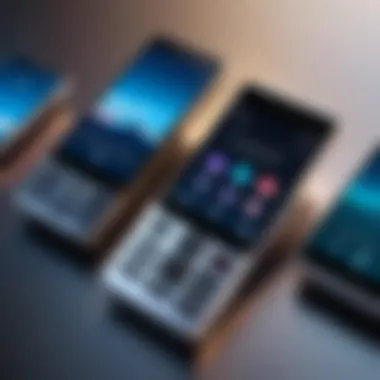

One of the main technical constraints facing smart flip phones is their hardware capabilities compared to typical smartphones. Smart flip phones generally employ less potent processors than their fully equipped counterparts. This can lead to a slower performance when running more demanding applications or multitasking.
Limited storage is also a common issue; many smart flip phones come with less internal memory. This can restrict the number of apps that can be downloaded and may affect performance. For IT professionals, who often need various tools on the go, this may create a bottleneck in everyday use.
Another significant limitation is screen size. Although smart flip phone designs are evolving to accommodate larger displays, they still may not offer the same screen real estate as traditional smartphones. This can impact the user experience, especially when dealing with more complex tasks such as coding or engaging with data-intensive applications.
In summary, the technical constraints of smart flip phones could pose serious limitations for many users, particularly in professional settings where performance and multitasking are critical.
Market Competition
Market competition is another significant challenge for smart flip phones. The mobile phone industry is primarily driven by major players like Apple and Samsung, which dominate the smartphone sector. As a result, smart flip phones have to carve out a niche within a landscape largely defined by high-end devices.
Many consumers may be resistant to switching from their familiar smartphones to smart flip phones due to brand loyalty and the vast ecosystem surrounding popular smartphone operating systems. This inertia can limit the appeal of smart flip phones despite their innovative features.
In addition, there is competition from budget-friendly smartphones that offer better specifications at a similar price point. These alternatives can make it challenging for smart flip phone manufacturers to demonstrate real value. If a consumer finds that they can get a smartphone with a more robust set of features for a similar price, they may be more inclined to choose that option.
The competition in the mobile industry often leaves little room for devices that do not fit neatly into established categories.
Understanding these market dynamics is crucial for anyone interested in the viability of smart flip phones. The landscape is not just about technology; it involves consumer behavior, marketing strategies, and the positioning of products in a crowded marketplace.
Future Prospects and Innovations
The future of smart flip phones is a subject of significant interest within the tech industry. Their revival amidst a predominately smartphone-driven market raises questions about their potential evolution and innovations. Understanding these prospects helps in assessing their relevance and longevity in a rapidly changing technological landscape.
Advancements in Technology
Innovations in technology play a crucial role in shaping the future of smart flip phones. With advances in hardware and software, manufacturers are likely to enhance the capabilities of these devices. Currently, smart flip phones boast features like 5G connectivity and improved battery life. Future iterations might include better sensors, refined user interfaces, and even more powerful processors. Furthermore, integrating artificial intelligence can lead to personalized user experiences and improved functionality.
- Enhanced Camera Systems: Higher quality camera technology could be included, making these devices competitive in photography.
- Improved Display Technology: Transitioning to foldable and OLED displays can enhance usability and aesthetic appeal.
- Software Ecosystems: Expanding app availability can support various user needs, from productivity to entertainment.
The importance of these advancements cannot be overstated. As consumer demands shift towards multifunctionality, smart flip phones must adapt or risk obsolescence in an environment dominated by multifunctional smartphones.
Predictions for Market Development
The market for smart flip phones is poised for interesting developments in the coming years. Analysts predict a gradual yet steady increase in demand, especially among segments valuing simplicity and functionality. Predictions suggest that key demographics, such as older adults and along with young professionals, may drive this resurgence.
- Increased Sales: Market analysts foresee a 15% growth in smart flip phone sales over the next five years.
- Diversified User Base: As societal trends lean towards minimalism, a diversified user base is expected, attracting those who prefer straightforward communication tools without sacrificing modern technology.
- Partnerships & Collaborations: Collaborations between established phone companies and software developers could enhance the functionality of smart flip phones, providing new features and apps.
Overall, the market development for smart flip phones appears promising. As they continue to evolve, maintaining a balance between simplicity and advanced features will determine their fate in a competitive communication sector.
"The smart flip phone could very well be the bridge between the simplicity of traditional mobile phones and the versatility of modern smartphones, making it a unique offering in today’s tech landscape."
End
The conclusion of this article holds significant weight in summarizing the exploration of smart flip phones within the broader context of modern communication. Smart flip phones represent an intersection of nostalgia and advanced technology. Their emergence calls into question the notion that only a smartphone can meet the requirements of today’s communication landscape.
Summary of Findings
In reviewing the content, several key findings emerge:
- Technology Integration: Smart flip phones effectively integrate modern technological capabilities, demonstrating that they can offer essential features such as internet access, apps, and sophisticated operating systems similar to their larger counterparts.
- Market Relevance: Despite their decrease in popularity decades ago, smart flip phones are making a comeback. This resurgence suggests they may cater to a niche market that values functionality over the extensive features found in traditional smartphones.
- Usability: The simplified user interface of smart flip phones can provide a user-friendly experience, especially for those who may feel overwhelmed by the expansive features of contemporary smartphones. This aspect makes them appealing to specific demographics, such as seniors or minimalists.
Final Thoughts on Smart Flip Phones
Smart flip phones signify a thought-provoking trend in the mobile market. They challenge the prevailing supremacy of smartphones by presenting a practical alternative for users seeking essential functions without excessive complexity. For IT professionals and tech enthusiasts, understanding this shift is crucial.
The potential for smart flip phones to meet the communication needs of modern users in a different, yet effective manner cannot be overlooked. While they may not replace smartphones entirely, their revival indicates a diversifying market responding to varied consumer demands. As technology continues to evolve, it will be interesting to observe if smart flip phones can sustain their relevance and possibly innovate further in the mobile communication sphere.
"As communication needs evolve, so too must the devices we choose to connect with one another."
This article highlights that smart flip phones are entering a phase of potential growth, inviting users to reconsider their preferences and the technological tools available to them.



